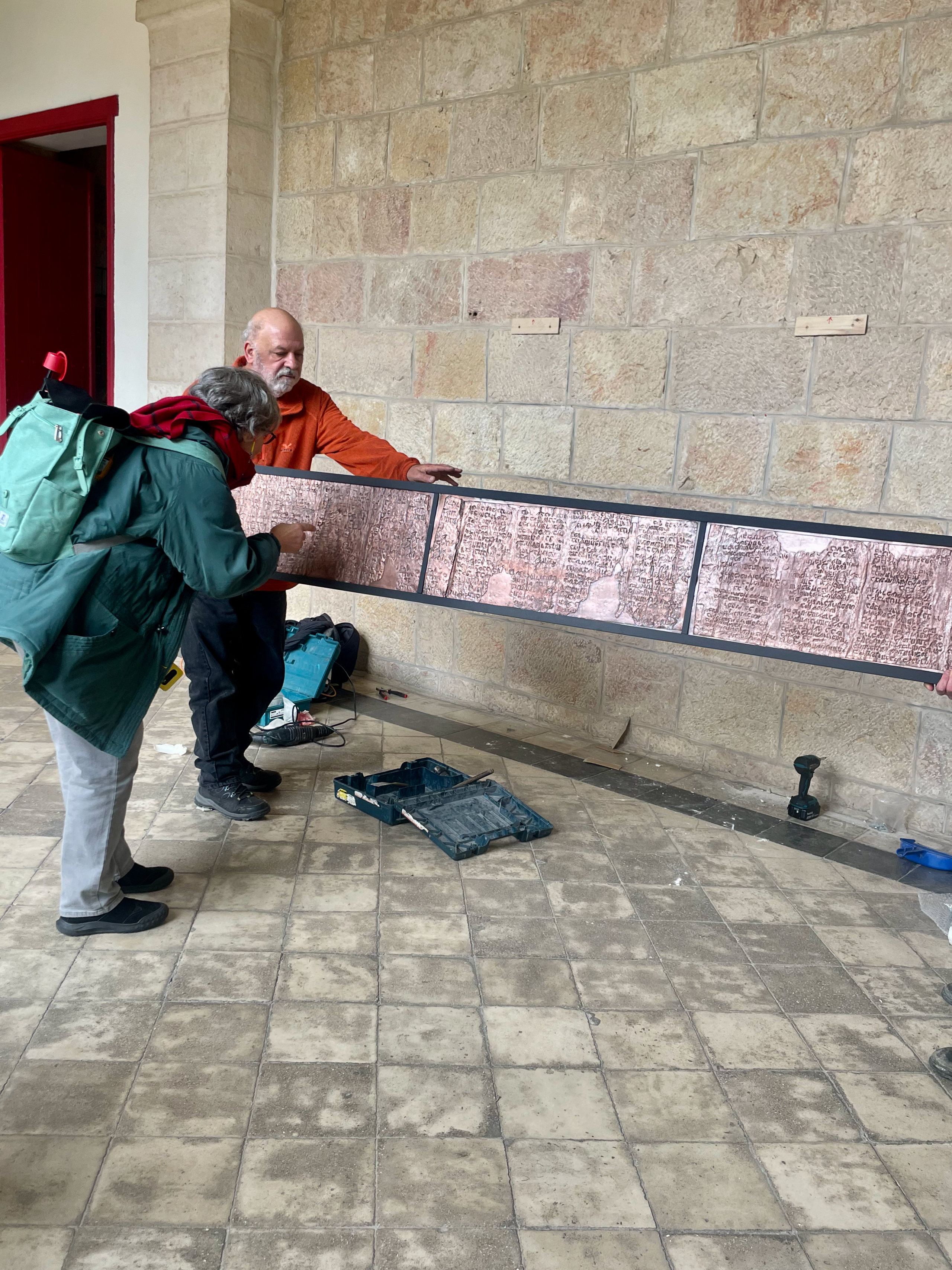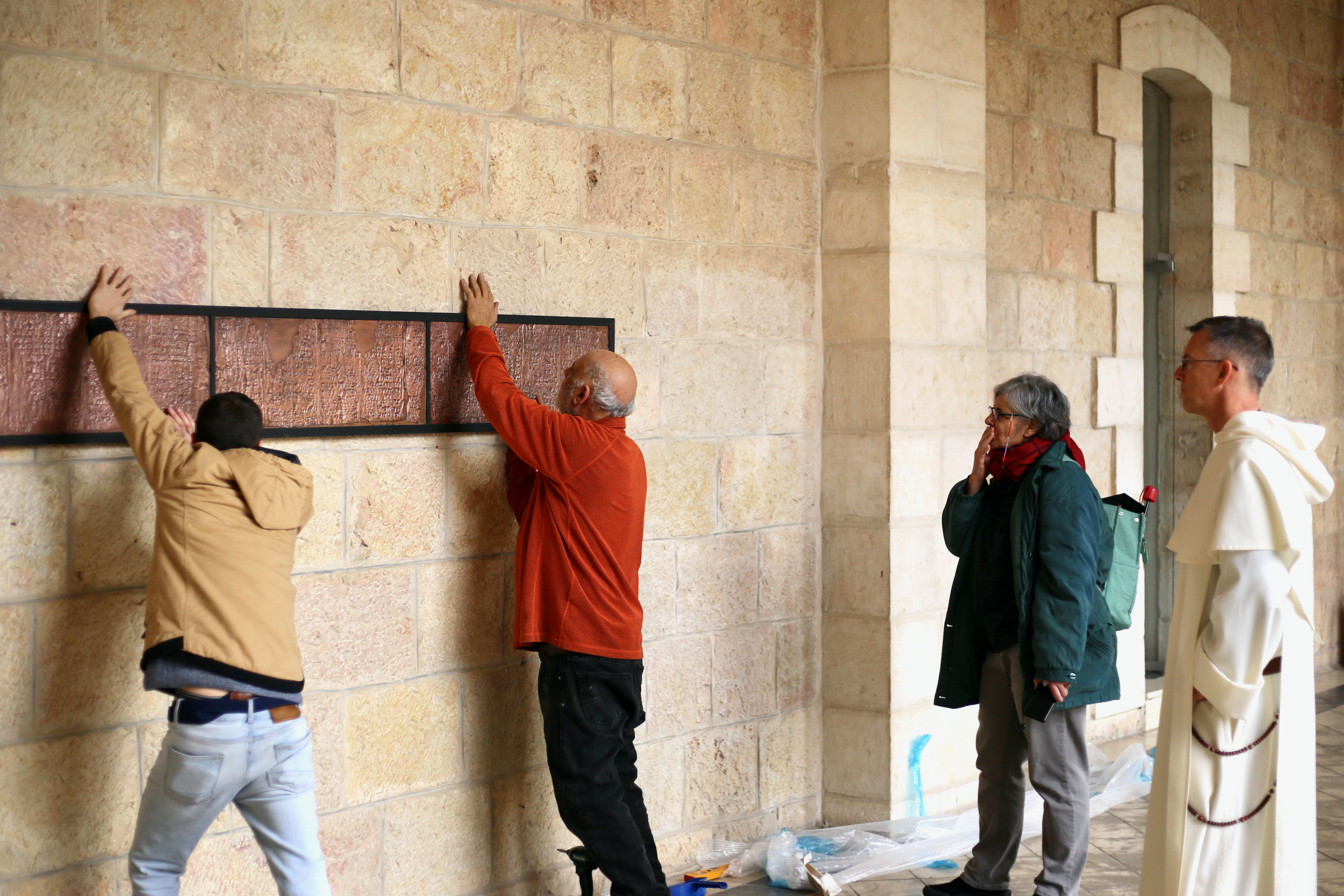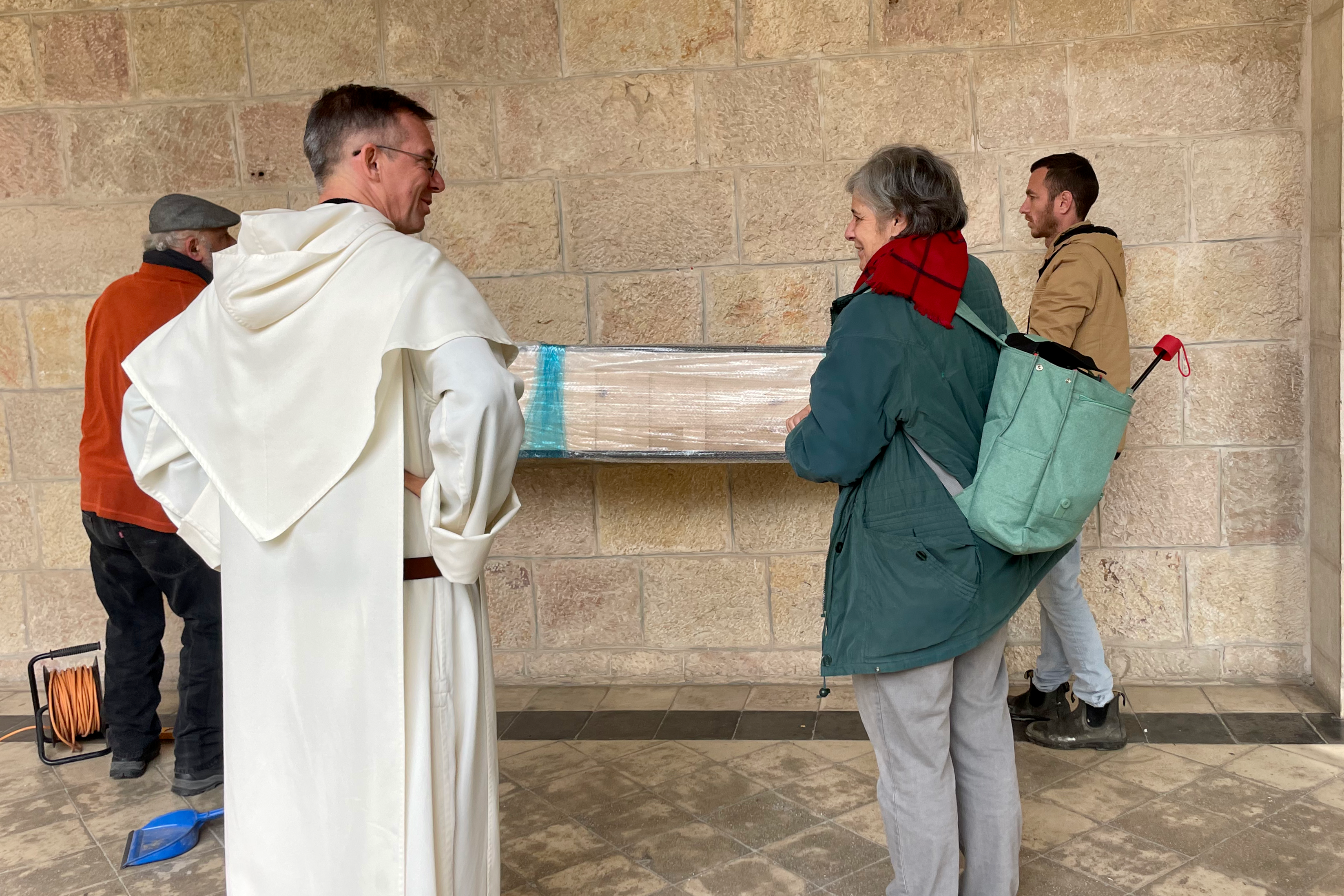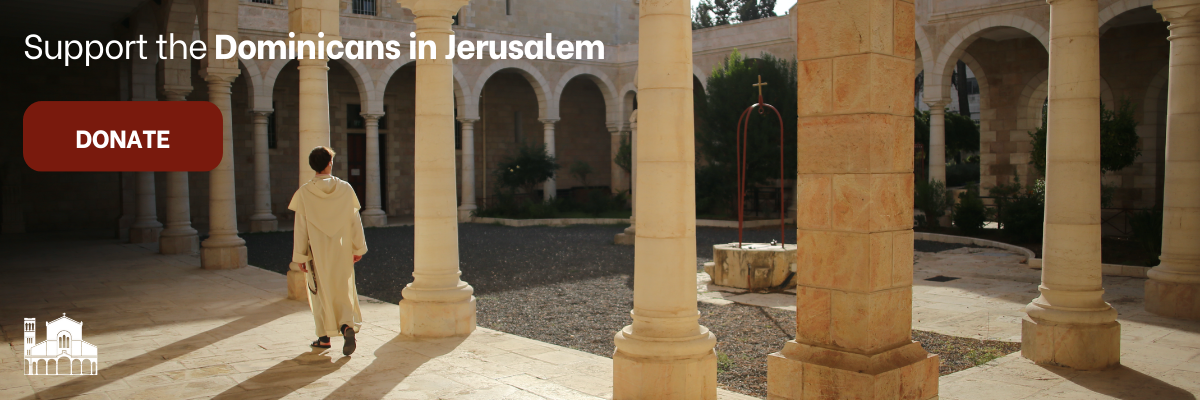The copy of the Qumran copper scroll has been returned to its place in the main gallery of the St.-Stephen’s Convent, in attendance of Michal Broshi, curator of the exhibition in which the work was included. The replica of the fascinating copper scroll was loaned to the Israel Museum for the Secrets exhibition, which ran from July 2022 to March 2023.
The scroll was discovered in 1952 by Henri de Contenson during excavations led by Father Roland de Vaux, director of the École, in grotto 3 of the site on the caves of the Dead Sea.
In the 1990s, the original scroll, belonging to the Amman Museum, had to be restored. The ÉDF-Mécénat foundation and the ÉDF-Valectra laboratories were called upon for their expertise in copper treatment.
The restoration of the scroll provided an opportunity to enhance the value of the manuscript, following on from the work carried out by Joseph Milik. At the time of discovery, the scroll, which contains a single text, was laid out in two separate pieces. The third and final riveted sheet had come loose when the scroll was rolled up and placed in the cave. In order to open the scroll and reveal its secrets, it was cut into 23 separate segments a few centimetres wide by a laboratory in Manchester. Even after the restoration and X-ray photographs carried out by ÉDF-Valectra, it was impossible to make an accurate plan of all the characters engraved in the copper. The major problem highlighted by the epigraphist Émile Puech, at the time professor at the École Biblique et Archéologique Française and director of research at the CNRS, was that the curvature of the scroll distorted the characters, and even the most sophisticated photographs were unable to cancel this out.
ÉDF-Valectra’s scientists set out to find a process that would produce a stamping that would respect the material and make the epigraphist able to create a satisfying plan of the inscription. In the end, silicone stamping of each of the curved segments produced a silicone flat of each of the three sheets. From this, a plaster reproduction of the scroll was created. A new copper artefact was then electroplated, from which four precious copies were made, donated to the Amman Museum, the Louvre Museum, the École Biblique et Archéologique Française de Jérusalem and the ÉDF Foundation.
 Émile Puech‘s lengthy work* with ÉDF-Valectra, carried out in three sessions in 1994, 1995 and 1996, enabled the restoration of the damaged parts thanks to a faithful transcription of the text, and its complete deciphering. The complete deciphering of the inscription was possible thanks to photographs of the replica of the scroll delivered to the École Biblique et Archéologique Française in Jerusalem, and precious X-rays of the segments. Such was the genesis of the new edition of the Qumran Copper Scroll, which has led to a renewed interpretation of its content.
Émile Puech‘s lengthy work* with ÉDF-Valectra, carried out in three sessions in 1994, 1995 and 1996, enabled the restoration of the damaged parts thanks to a faithful transcription of the text, and its complete deciphering. The complete deciphering of the inscription was possible thanks to photographs of the replica of the scroll delivered to the École Biblique et Archéologique Française in Jerusalem, and precious X-rays of the segments. Such was the genesis of the new edition of the Qumran Copper Scroll, which has led to a renewed interpretation of its content.
In short, the mysterious scroll contains a list of topographical indications pointing to the hiding places of a treasure… that has never been identified.
The secrets of the scroll have not yet had their last word!
Interview of Émile Puech, led by Charlotte Desachy
Photo : ÉBAF, Ordo Praedicatorum
*Le rouleau de cuivre de la Grotte 3 de Qumrân (3Q15). Expertise – Restauration – Épigraphie, par Daniel Brizemeure et Noël Lacoudre EDF, et Émile Puech, CNRS et 34 EBAF. Volume I – Texte, xxii + 227 p., Volume II – Planches, xxvi + 424 p. : CCCLXXXIII. STDJ 55 I-II, Brill Leiden, in folio 28,5 x 37,5.


